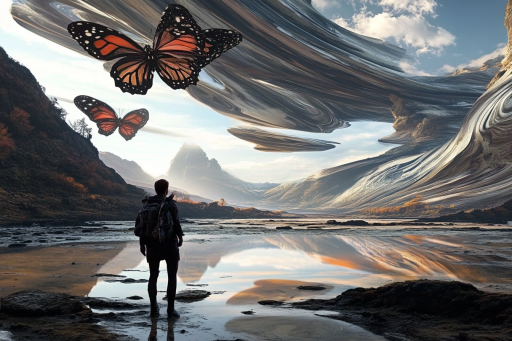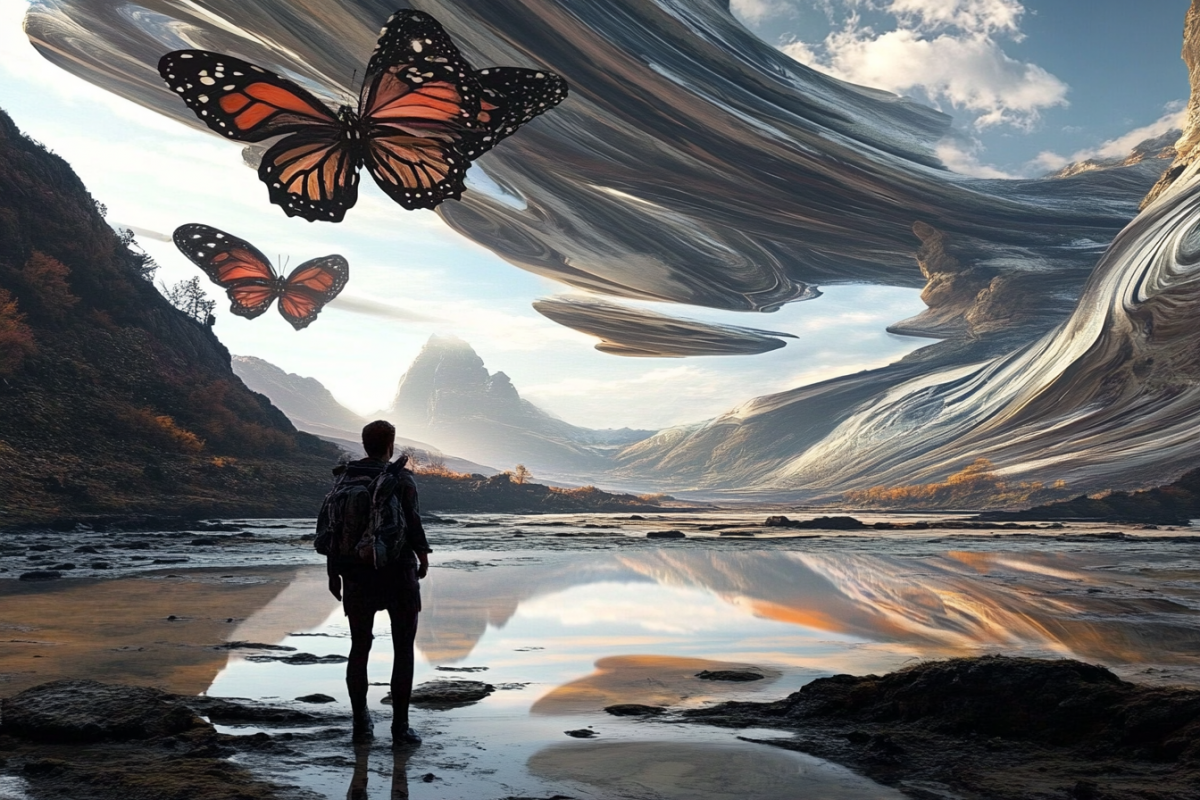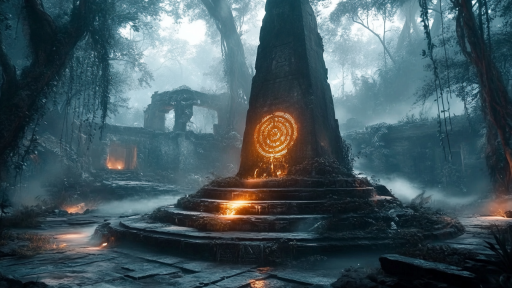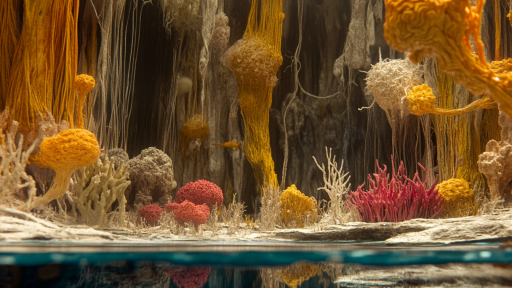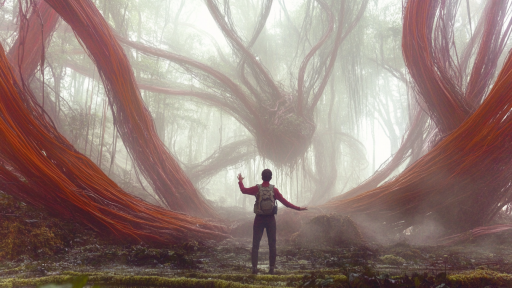
Your brain is a master illusionist, constantly shaping what you see—but it’s not always accurate. From eerie shadow figures in the dark to vibrant colors that don’t exist, the mind has countless ways to distort reality. Sometimes, these tricks are harmless; other times, they leave people questioning their own senses. Step into the fascinating world of perception and discover the strange ways your brain can deceive you.
The Shadow That Wasn’t There

Ever caught a glimpse of something moving in your peripheral vision, only to turn and find nothing there? The brain often misinterprets incomplete visual data, filling in gaps with familiar shapes—sometimes creating eerie shadowy figures. This phenomenon, known as pareidolia, is why people claim to see ghosts in dimly lit rooms. In reality, it’s just your mind trying to make sense of the unknown.
The Face in the Clouds (or on Toast)

Have you ever looked at the sky and seen a face staring back? Your brain is wired to recognize faces, even when none exist, which is why people see famous figures in burnt toast or tree bark. This hardwired tendency helps humans identify others quickly but can lead to bizarre illusions. The next time you see a “face” in an object, remember—it’s just your brain making connections where there are none.
The Unmoving Object That Won’t Stay Still

Staring at a still image only to see it subtly shift? That’s the motion aftereffect, a trick of the brain caused by staring at moving patterns. When you suddenly look away, your neurons keep firing, making static objects appear to move. It’s the same reason you feel like you’re still rocking after stepping off a boat—your brain takes a moment to reset.
The Color That Never Existed

Some illusions trick the brain into seeing colors that aren’t actually there. Take the McCollough effect, where staring at colored patterns alters how you perceive black-and-white images. Even after looking away, your brain insists on adding color that doesn’t exist. It’s a reminder that what we see isn’t always what’s real—sometimes, it’s just a lingering mental echo.
The Words That Appear from Nowhere

Some people experience text hallucinations, where letters and words seem to materialize in patterns like wallpaper or wood grain. The brain is constantly searching for meaning in randomness, often turning visual noise into recognizable symbols. This phenomenon can be unsettling, but it’s simply an example of the mind’s relentless pattern-seeking behavior.
The “Melting” Walls Effect

Have you ever stared at a surface, like a patterned carpet, only to see it start “breathing” or shifting? This visual distortion can happen when your eyes adjust to repetitive patterns, causing the brain to misfire its depth perception. This is why people in altered states of consciousness often report “melting” walls—it’s a quirk of normal brain function, exaggerated.
The Phantom Flicker in the Dark

When you think you see a light flicker in the corner of your eye but it never actually did, blame your retinal cells adjusting to low light conditions. Your brain is hyper-alert in dim environments, constantly interpreting shadows and movement that aren’t really there. This is one reason horror movies play on darkness—it activates the brain’s natural tendency to imagine unseen things lurking just out of sight.
The Object That Grows or Shrinks

Ever stared at a building or a road and felt like it was slowly expanding or contracting? This happens because your brain is constantly recalibrating its sense of space. Changes in contrast, movement, or lighting can make objects appear to warp. It’s a bizarre but harmless quirk of how we perceive size and distance.
The Stranger in the Mirror

If you stare at your reflection for too long in dim light, your face may start to look distorted—or even transform into someone else. This eerie illusion, called the Troxler effect, happens because your brain stops focusing on stable details, causing them to fade or shift. Some believe this is why mirrors have long been linked to supernatural folklore.
The Invisible Colors That Shape Your World

You may not realize it, but your brain is constantly filtering out “invisible” colors. Optical illusions like the checker shadow illusion prove that two identical colors can look completely different depending on their surroundings. Your mind doesn’t just see what’s there—it adjusts reality based on context, often tricking you into believing something that isn’t true.
The Hole in Your Vision You Never Notice

You have a blind spot in each eye where the optic nerve connects to the retina—yet you never see it. Your brain fills in the missing information, seamlessly blending the hole into the surrounding image. Sometimes, this trick fails, leading to strange gaps in vision that disappear when you blink. It’s proof that what you “see” is often more brain than reality.
The “Double Vision” Without Glasses

Ever looked at an object and seen it briefly duplicate or blur, even without moving your eyes? This can happen due to binocular rivalry, where your eyes compete to process slightly different images. The brain usually merges them into a single view, but sometimes, it fails—creating momentary double vision or ghostly afterimages.
The People Who Aren’t Really There

Some people report seeing fully formed figures for a brief moment before they vanish—especially when waking up or falling asleep. Known as hypnagogic hallucinations, these fleeting visions are a mix of dream imagery and waking perception. Though they can feel terrifying, they are completely normal and simply a sign that the brain is shifting between consciousness and sleep.
What If Reality Is Just a Guess?

Every second, your brain takes incomplete data from your senses and turns it into a version of reality that makes the most sense. But as these illusions show, that version isn’t always accurate. If your brain can fabricate faces, colors, and movement where none exist, how much of what you see is truly real? Maybe the biggest illusion of all is the one we experience every day.

